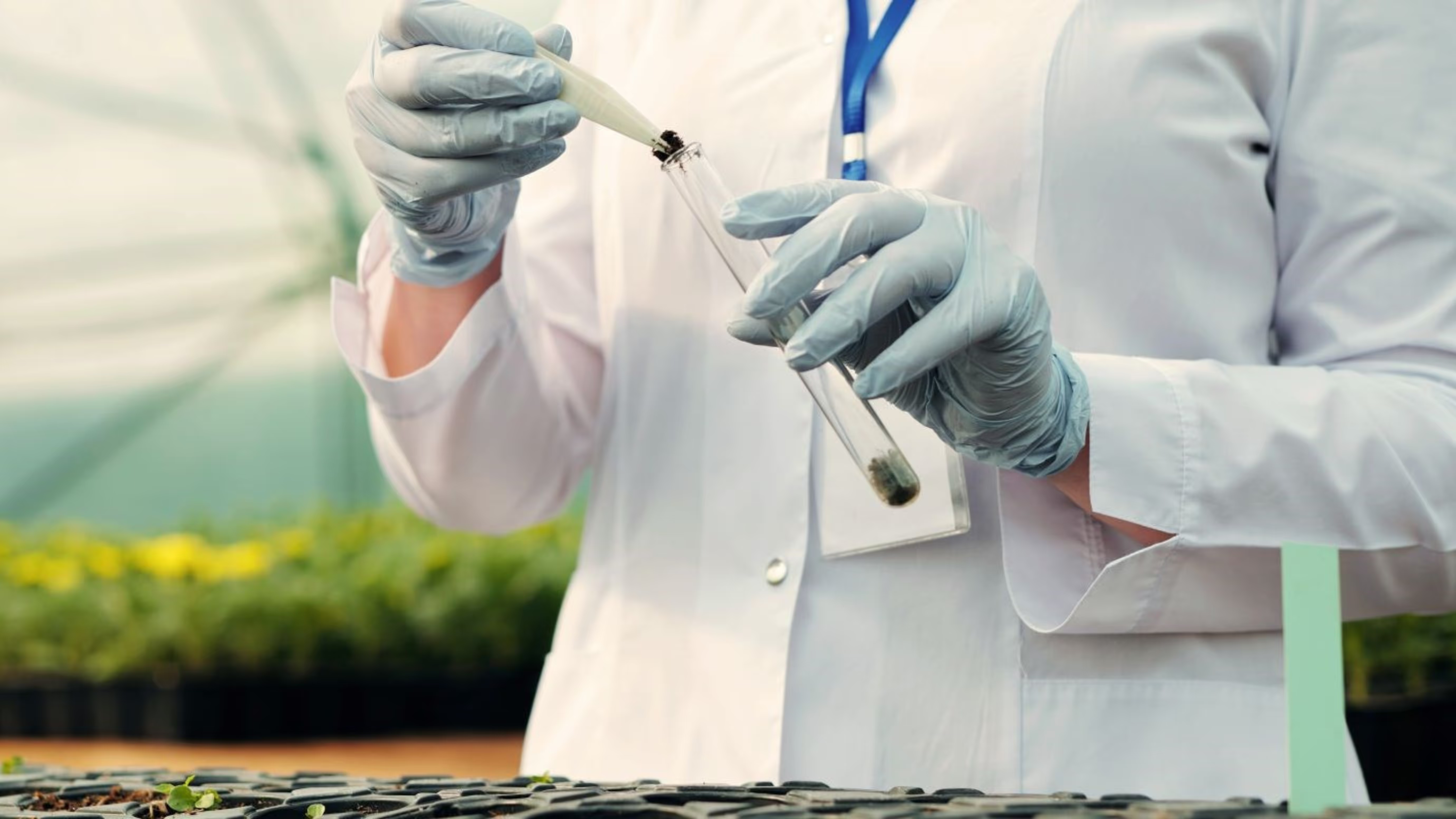Gene editing technologies like CRISPR and RNA interference (RNAi) are revolutionising agriculture.
They allow producers to develop new, more sustainable fruits and vegetables by offering the greater precision producers need to enhance a crop’s ability to resist pests and diseases and reduce the environmental impact of farming whilst allowing the produce itself to improve its taste, nutritional value and shelf-life.
How is CRISPR being used in agriculture?
CRISPR (Clustered Regularly Interspaced Short Palindromic Repeats) is a powerful gene-editing tool that allows scientists to make specific changes to the DNA of plants.
Imagine a highly targeted pair of molecular scissors, able to cut a crop’s DNA at precise locations to either remove, add or alter its genetic make-up to achieve a specific outcome. These outcomes include:
- Improved crop traits
CRISPR can be used to enhance the desirable traits of fruits and vegetables – its taste, nutritional value or shelf life.
- Higher resistance to pests and diseases
By cutting out the genes that make fruit and vegetables susceptible to pests and diseases, CRISPR can create far more resilient crops. This will make more produce more sustainable as it lessens the need for chemical pesticides.
- Greater adaptability to climate change
CRISPR can help develop crops that are better able to adapt to our changing climate conditions, for example by making varieties more resistant to drought or increased acidity or salinity. This will play a huge part in helping us achieve the food security we face because of global climate challenges.
How is RNA interference (RNAi) being used in agriculture?
RNA interference (RNAi) is a natural process that regulates gene expression by silencing specific genes. In an agricultural context, RNAi can be used to target and suppress genes in pests, pathogens, or the plants themselves to improve crop health and yield. Some of the most notable applications of RNAi include:
- Pest control
RNAi can be used to develop crops that produce RNA molecules targeting essential genes in pests, effectively controlling pest populations without harming beneficial insects. This method offers a more environmentally friendly alternative to traditional pesticides.
- Disease management
RNAi can also be used to enhance a plant’s ability to resist viral, bacterial, and fungal infections by silencing the genes pathogens need to survive or replicate.
- Better crops
In a similar way to CRISPR, RNAi can be used to improve crop traits like nutritional content, flavour, and shelf life. A good example is the creation of potatoes that produce far less harmful compounds during frying.
So, can CRISPR and RNAI help us develop new and more sustainable fruits and vegetables?
Companies are already successfully producing gene edited fruit and vegetables using CRISPR and RNAi. Two good examples are Tropic Bioscience and Pairwise.
Tropic Bioscience have developed a new non-browning banana. Their gene-edited banana will stay fresh for up to 12 hours after peeling and cutting. It is also less susceptible to turning brown due to bruising during harvesting and transportation, which helps extend its shelf life and reduce food waste.
Browning in bananas, apples and potatoes is caused by the enzyme polyphenol oxidase which catalyses the oxidation of phenolic compounds when the fruit is exposed to air. Using Gene Editing Induced Gene Silencing (GEiGS) technology, Tropic Biosciences were able to remove the genes responsible for polyphenol oxidase production in bananas to create a banana that keeps all its taste, texture, and sweetness but doesn’t brown.
Additionally, Tropic Bioscience have developed a Fusarium wilt resistant banana using GEiGS to combat fungal disease—fusarium wilt (TR4) in bananas. GEiGS is a patented technology, combining CRISPR with RNAi, that offers greater specificity compared to traditional gene editing tools like CRISPR. Instead of switching a gene on or off, GEiGS offers much greater control by, for instance, example reducing the specific expression of a gene by a chosen percentage. This means the desired benefits are achieved without the associated downsides, i.e. flavour and texture.
Instead of regulating a gene within the banana itself, this innovative GEiGS technology targets and disables a specific gene in the fungus. This method offers greater precision and flexibility, allowing the fungus to be targeted without interfering with the banana plant’s essential function
Meanwhile, Pairwise has developed milder, more flavoursome mustard greens. They have used CRISPR gene-editing technology to design greens with a milder flavor compared to a traditional mustard greens, strong, spicy taste. Pairwise’s proprietary Fulcrum™ Platform has edited the genes that give greens that taste without impacting its high nutritional value.
Pairwise has also used Fulcrum™ to develop the world's first seedless blackberry by eliminating the genes responsible for seed development in blackberries. This has resulted in their ability to create a seedless fruit that retains all its nutritional value and flavour but gives consumers a more enjoyable eating experience and could very well increase market demand for blackberries.
How are gene edited crops being regulated?
The EU is still trying to decide how to regulate gene-edited crops.
As of April 2025, EU Member States have agreed to move forward with developing new rules for plants produced using new genomic techniques (NGTs), which include gene editing. This agreement allows formal negotiations with the European Parliament to begin, aiming to create regulations that directly address the new variants being created by gene editing.
This means that currently, gene edited plants remain regulated under the EU's GMO framework, as they have since The European Court of Justice ruled that all gene-edited plants fall under this regime in 2018. However, the new proposal seeks to differentiate between various types of gene edited plants. It is hoped this eases some of the current regulatory pressures.
Are gene edited crops patentable in the EU?
This patentability of gene edited crops is a complex and evolving issue. However, it is an issue of particularly importance for small breeders and farmers who are concerned about how patents might impact their ability to access and use gene-edited crops.
Currently, plants produced using new genomic techniques (NGTs), including gene editing, can be patented. However, there is an ongoing debate around whether this will continue.
In 2023, the European Commission proposed new regulations for gene edited plants. These included provisions for patentability. The European Parliament suggested amendments should be made to stop these plants form being patented. However, their proposal faced significant resistance.
At time of writing, the European Council has adopted a negotiating mandate promoting an increased transparency in intellectual property rights rather than an outright ban on patents for gene edited plants, but negotiations continue and the final decision on the patentability of gene edited crops will depend on the outcome of negotiations still in progress.
If you are involved in the development of new foods and would like to discuss how best to identify, protect, commercialise and enforce the intellectual property you create, contact our specialist food and agritech team to arrange an initial free meeting.





















%203.jpg)

%20provider.jpg)
.jpg)
%20(1).jpg)


